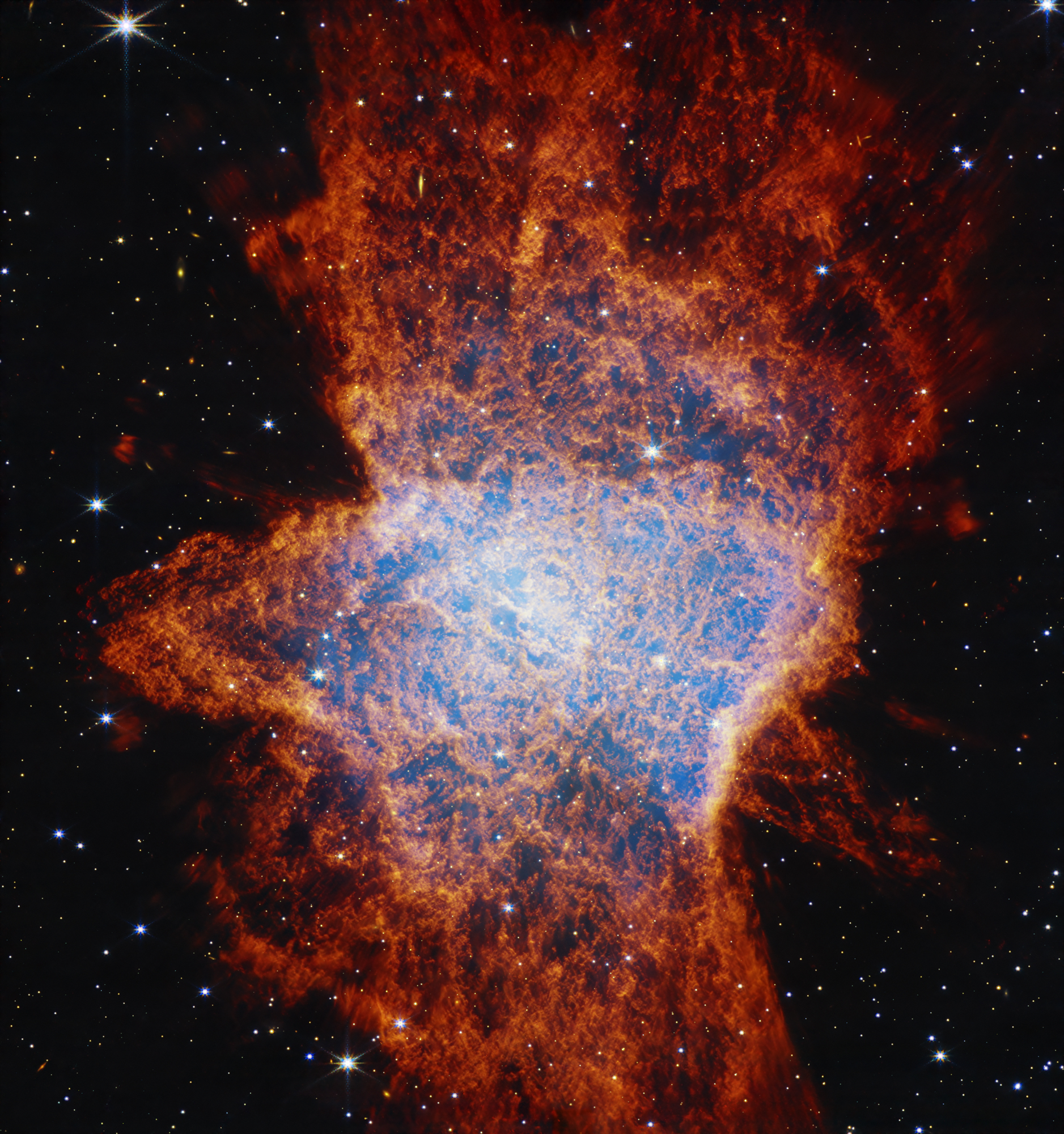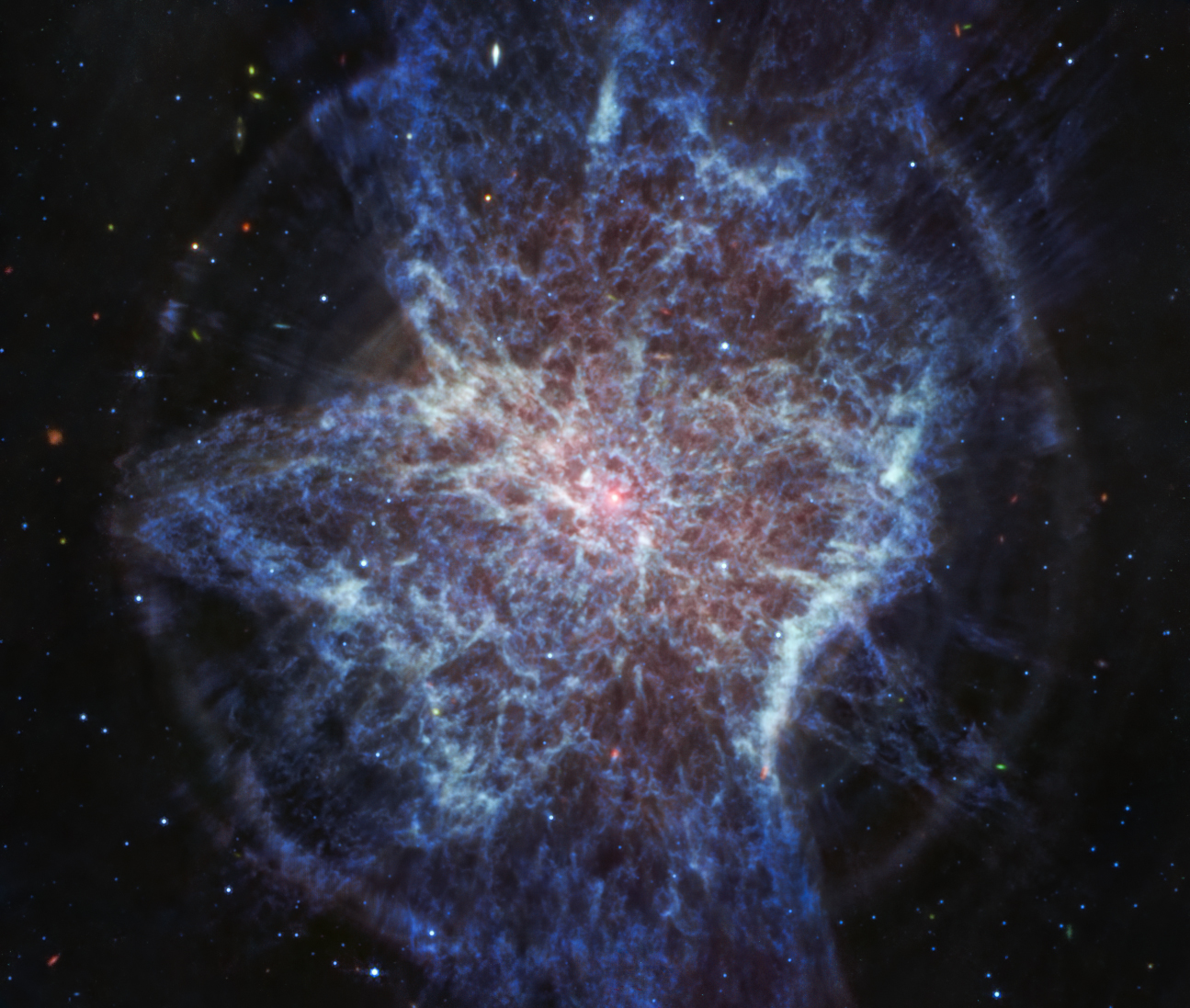This splash of paint on the canvas of space is the planetary nebula NGC 6072, the dying embers of a ruined star that has reached the end of its sun-like life. Cocooned inside the nebula, within its own ejected outer layers, the fading star is undergoing a transformation into a white dwarf.
As the James Webb Space Telescope (JWST) shows in these two images, one taken in shorter-wavelength, near-infrared light and the other at mid-infrared wavelengths, the shape of the nebula is surprisingly complex— suggesting there's more going on than meets the eye.
NGC 6072 is found in the constellation of Scorpius, the Scorpion, at a distance measured by the Gaia mission as being 3,060 light-years away. Gaia's previous observations strongly suggest there is not just one star at the heart of NGC 6072, but two. This is now backed up by what the JWST has seen in its two new views of the nebula.
A tale of two stars

Some tens of thousands of years ago, the nuclear furnace at the core of the more massive of a pair of stars began stuttering. As the outward pressure of radiation from the fusion reactions in the star's core began to drop off, the outer layers began to contract, heat up and ignite their own fusion reactions, providing the energy for them to eject themselves from the star, forming the nebula. The white dwarf is the star's exposed and extremely hot (but inert) core.
Many planetary nebulas appear cylindrical, bi-polar, or round, but NGC 6072 is different. It's like a misshapen splodge of color on the sky. The view seen by the JWST's Near-Infrared Camera (NIRCam) reveals multiple pairs of outflows coming from the dying star and pointing in various directions. One outflow is visible from the 11 o'clock to the 5 o'clock position. Another can be seen from 1 o'clock to 7 o'clock, and there's a possible third outflow that appears vertical in the image, from 12 o'clock to 6 o'clock.
It is thought that the changing direction of these outflows is a result of gravitational interactions between the dying central star and its companion star.
The various colors (these are false colors because they have to represent infrared light that we cannot see with our eyes) also inform us about the nebula's properties. By this point, the central star has shed up to 80% of its total mass, and we see this in the clumps of gas and dust painted dark orange in the image. Relatively empty, dust-free regions appear blue. The clumpiness could be caused by denser patches of molecular hydrogen gas being shielded from the white dwarf's harsh ultraviolet light by veils of thick dust. Meanwhile, the exposed gas around these clumps (closer to the heart of the nebula) is being ionized by the ultraviolet light.
Extending into longer wavelengths, the JWST's Mid-Infrared Instrument (MIRI) captures a series of concentric rings radiating out from the center of the nebula. These rings could be more evidence for a second star. As that second star orbits the dying star, it cuts through the material being ejected, carving gaps that propagate outwards as the ejected material moves away. However, an alternative explanation for the rings could be a series of pulsations within the dying star that take place every few thousand years.

Thanks to MIRI's ability to see light that isn't absorbed by dust, it opens a window into the heart of the nebula where we can see the central star system as a pinkish-white dot. However, if there is a companion star, it is so close to the dying star that not even the JWST can resolve the two as separate objects.
Whatever the case, the JWST's images emphasize just how beautiful and unusual the deaths of stars can be, and foretell the future of our own sun in about five billion years' time.

.jpg) 20 hours ago
1
20 hours ago
1
 English (US)
English (US)